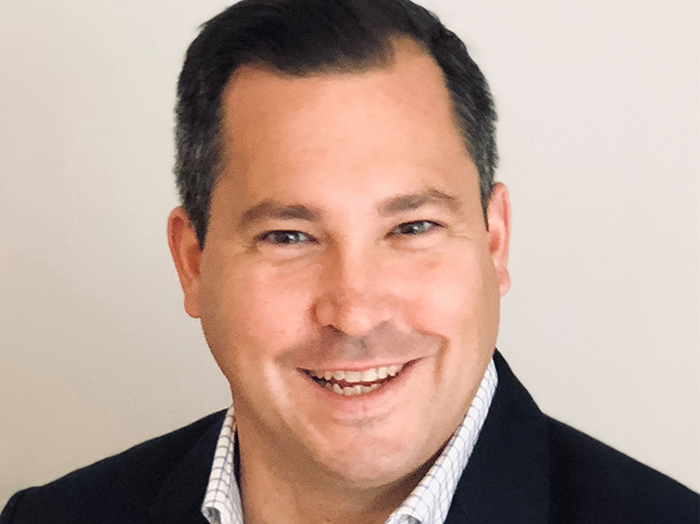RISKWORLD™ 2025 Coverage: Sompo’s James Thielebeule

At RISKWORLD™ 2025 in Chicago, Dan Reynolds, the editor in chief of Risk & Insurance, caught up with James Thielebeule, the head of ocean marine, North America, for Sompo. What follows is a transcript of that discussion, edited for length and clarity.
Risk & Insurance: Thanks for meeting with us today James. For starters, what effect are these ongoing tariffs having on the underwriting of cargo insurance?
James Thielebeule (JT):
Dan, it’s great to be speaking with you.
Right now, tariffs are in a state of flux—they’re evolving, as trading partners continue to negotiate terms. It’s tough to say exactly how they’ll impact things, not just when it comes to cargo insurance, but throughout the supply chain and across many insurance product lines.
What we do know is that tariffs can impact the cost of goods traded internationally, which can contribute to higher inflation and reduced consumer demand, while also disrupting supply chains.
A cargo insurance policy is a valued policy meaning premiums, limits and rates are indexed to insured values. When there is a significant change in the insured value—such as fluctuations caused by tariff adjustments—this volatility can introduce uncertainty into the market, complicating forecasting efforts. For example, anticipation of potential tariff changes may lead businesses to adjust their inventory levels or sourcing strategies, which in turn, could affect their insurance needs.
Trade dynamics are complex and interconnected. Adjustments in tariffs can potentially alter shipment costs and insurance premiums, while shifts in consumer behavior or market conditions may impact demand for imported goods. This interplay creates a complex situation for insurers: while the need for coverage may increase, overall premiums volumes could decrease.
It’s a shifting landscape, and we’ll need to keep an eye on how everything develops to understand the broader implications.
R&I: And, of course, the underlying word is uncertainty.
JT: Uncertainty is the word of the day. There’s no question about it.
R&I: Cargo theft isn’t going away. Could you describe how you’re seeing it in terms of severity or frequency?
JT: I’d just say, generally, there’s been a large increase in cargo theft over the last number of years. And the complexity around it has changed as well. The criminal organizations continue to become savvier.
In response to the rising incidence of cargo losses, the industry—including brokers—is taking more proactive measures to protect goods and mitigate risks. One important step is encouraging insureds to thoroughly vet and evaluate the motor carriers they work with, ensuring they have strong safety records, proper licensing, and a history of secure operations. This helps reduce the likelihood of partnering with carriers who may pose higher security risks.
Additionally, there’s a growing emphasis on technology adoption – existing and new. Here at Sompo, we’ve been educating our insureds on the benefits of integrating real-time tracking tools such as GPS devices, RFID tags, dash cams, and electronic locking devices. These technologies provide continuous, live updates on cargo location, allowing for immediate detection in case of tampering or theft. Early alerts enable faster law enforcement involvement and recovery efforts, significantly increasing the chances of retrieving stolen or lost cargo.
Overall, these measures—rigorous carrier vetting combined with advanced tracking—are key to enhancing supply chain security, reducing losses, and enabling quicker responses when incidents occur.
R&I: I’m thinking about what we have been calling social engineering using phony e-mails and making false demands. They’re infiltrating the insured’s communication network.
JT: There are several methods being used to commit this fraud, including impersonating staff of legitimate companies to reroute cargo into the hands of criminals. Collectively as an industry, we must step-up our game and enhance our efforts to identify and implement the most effective strategies for combating these malicious actors.
R&I: The buzz about AI seems to be everywhere. Are you seeing it enter into your world in terms of helping underwriters?
JT: First, we’re all beginning to notice AI making its way into our everyday lives. I believe AI will make its way into the insurance industry, although it’s still in its early stages. There is potential on the underwriting side, especially in areas such as managing an underwriter’s desk and streamlining submission flows.
R&I: In risk selection, do you think?
JT: Underwriters receive numerous submissions. AI has the potential to identify which submissions warrant closer attention, helping prioritize the most relevant ones. Then once the underwriter filters those out, AI could assist in evaluating risks and supporting some predictive modeling during the underwriting process. For static risk cargo submissions, integrating modeling software into both the submission and underwriting workflows— which we currently do—can enhance efficiency and decision-making.
R&I: So, in a nutshell, you’re not a cynic about AI.
JT: I think there’s potential for overall efficiency and it could become a valuable resource when contemplating underwriting decisions.
R&I: A lot of people are retiring from this industry in the next five to ten years. Are you optimistic that the companies in this space can fill those roles?
JT: I am unbelievably optimistic. It might be the fact that we work for Sompo. However, as an industry, we are all focused on engaging and retaining new talent.
When I started in the industry twenty-some-odd years ago, there were a few interns working at the insurance company I worked for.
Now it seems like the industry has really adopted robust internships and robust trainee programs. Every year, I’m amazed with the crop of interns and trainees that are coming through our intern and underwriting trainee programs. I think the industry, as a whole, is doing a much better job selling itself these days.
In the past, people kind of fell into insurance, if you will. But now, we’re seeing candidates both from an internship and a training perspective that go to school for risk management. They go to school for insurance. I think the industry has done a really good job of bringing those people in and really getting the word out that it is a great industry to work in.
R&I: Was there anything about marine cargo underwriting or claims or about Sompo that is top of mind for you that you think would be important to get across to our readers that I didn’t ask you about?
JT: I think from a talent standpoint, Sompo, particularly in ocean marine, excels at sourcing candidates from diverse backgrounds. We actively recruit individuals interested in insurance and those passionate about maritime careers. For example, we may engage with university graduates specializing in risk management, while also seeking candidates from Merchant Marine academies. This approach allows us to identify talent with a genuine interest in either the marine industry or insurance, and then tailor our recruiting and training efforts accordingly.
Currently, our team includes professionals who graduated from Merchant Marine academies, as well as those with risk management degrees from St. John’s University and the University of Georgia. This dual strategy ensures that we attract a broad range of expertise, strengthening our capabilities in both the marine and insurance sectors. &










